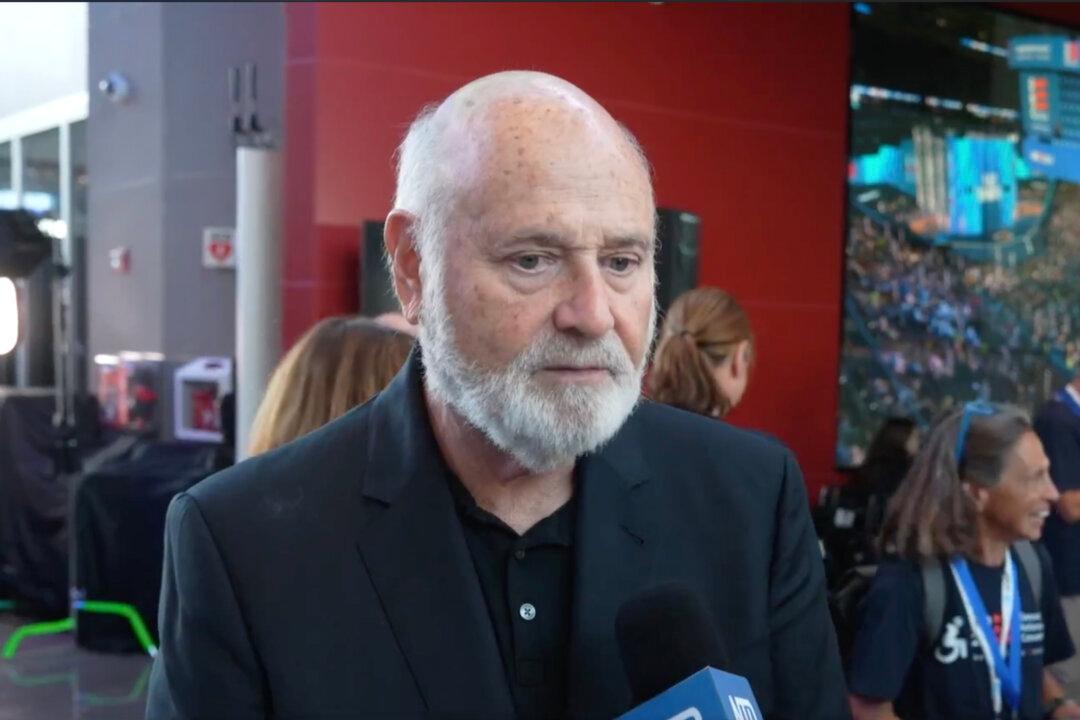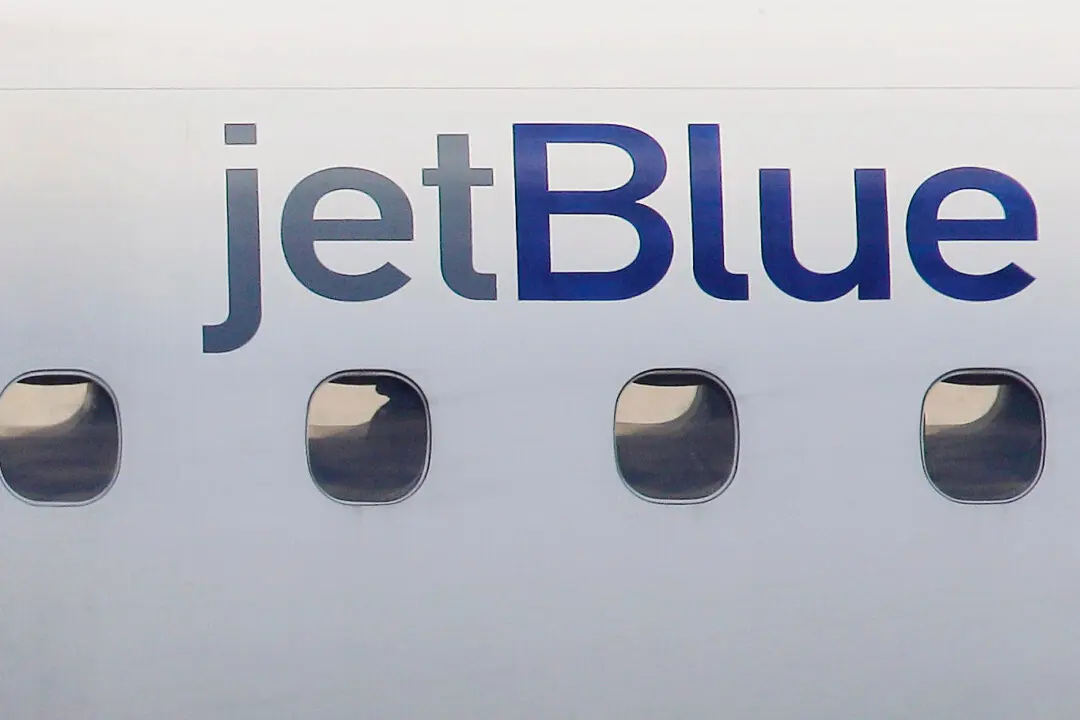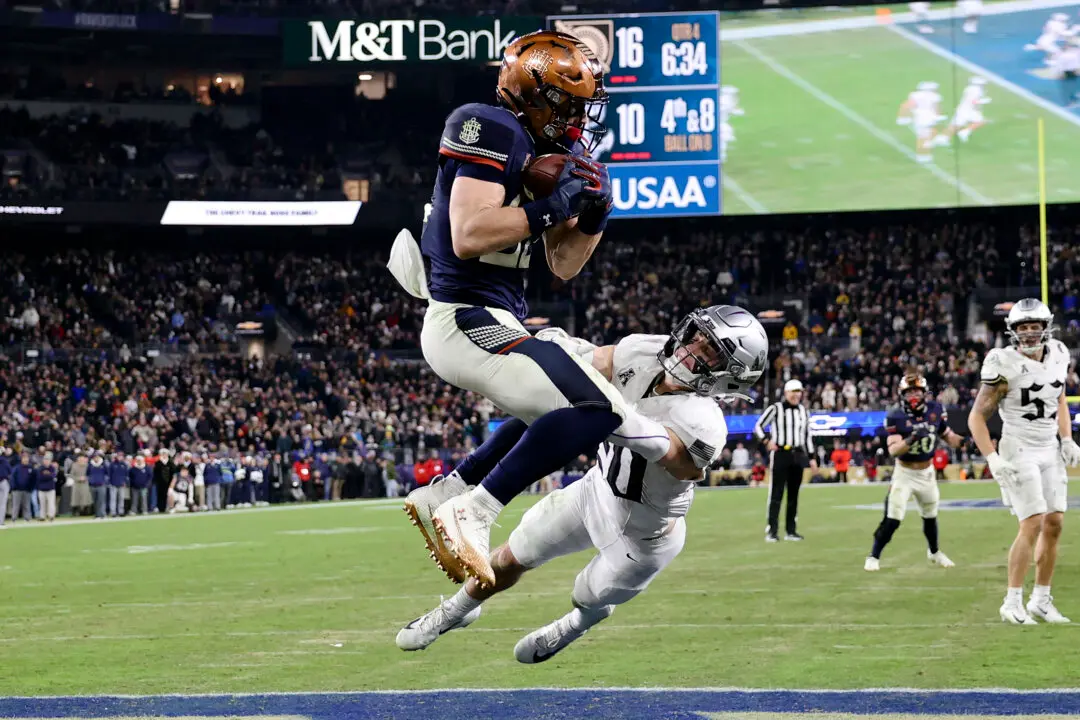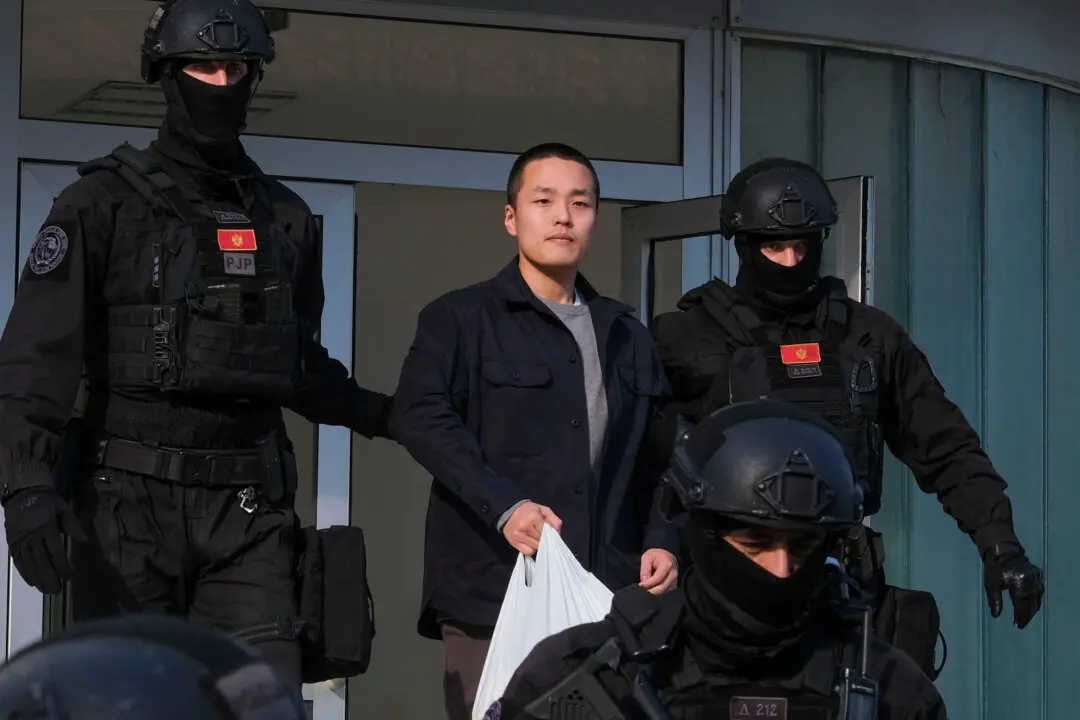MOJAVE, Calif.—Virgin Galactic rolled out a new version of its SpaceShipTwo space tourism rocket Friday as it prepares to return to flight testing for the first time since a 2014 accident destroyed the original craft, killing a pilot and setting back the nascent industry.
A Land Rover with Virgin Galactic founder Sir Richard Branson standing through the sunroof pulled the ship in front of an audience inside a hangar at Southern California’s Mojave Air & Space Port, where it was assembled.
Branson’s 1-year-old granddaughter, Eva-Deia, helped by her mother, christened the craft by breaking a little bottle of milk over its nose. The baby is the daughter of Branson’s son, Sam, and his wife, Bellie.
“All of us in this room need to pinch ourselves ... isn’t she quite beautiful,” Branson told the audience.





